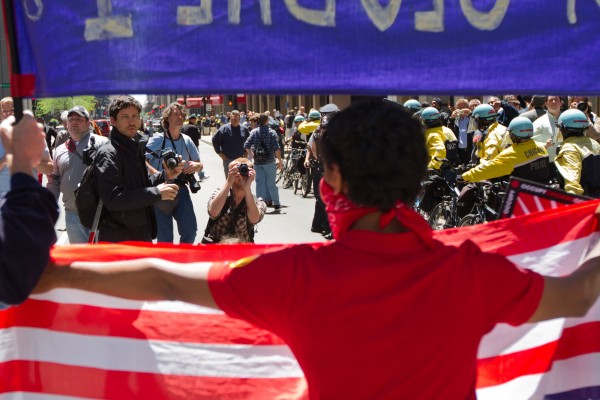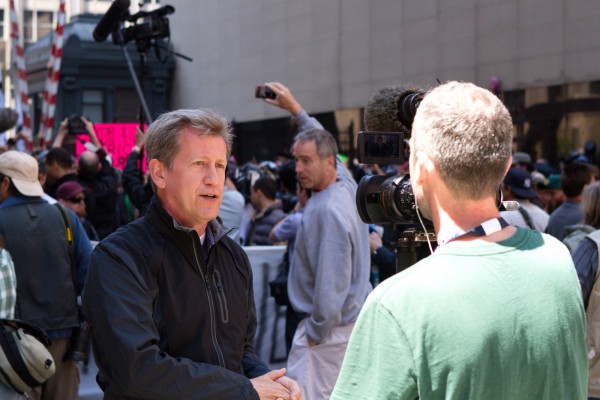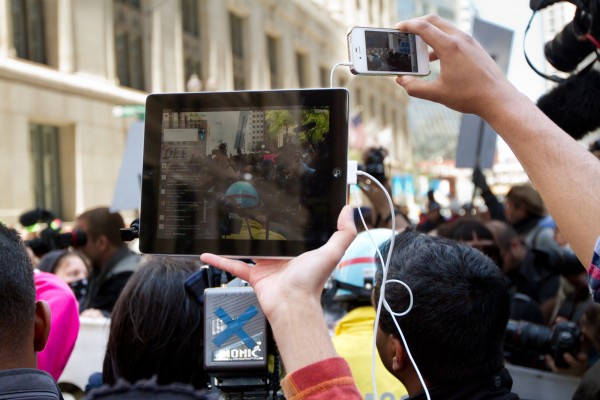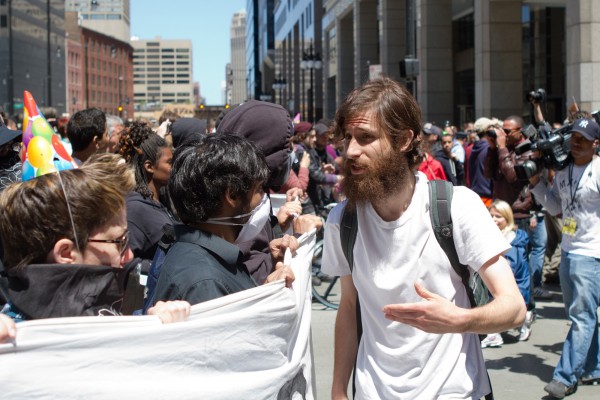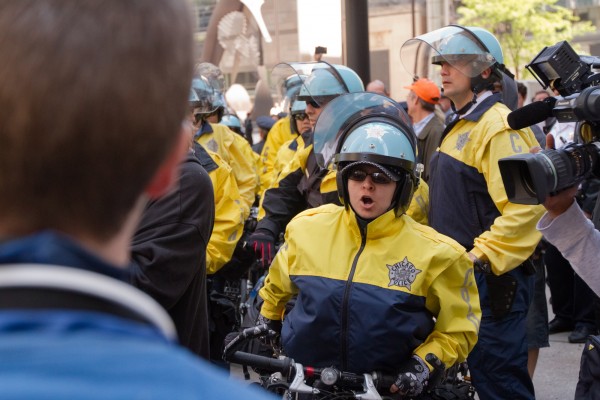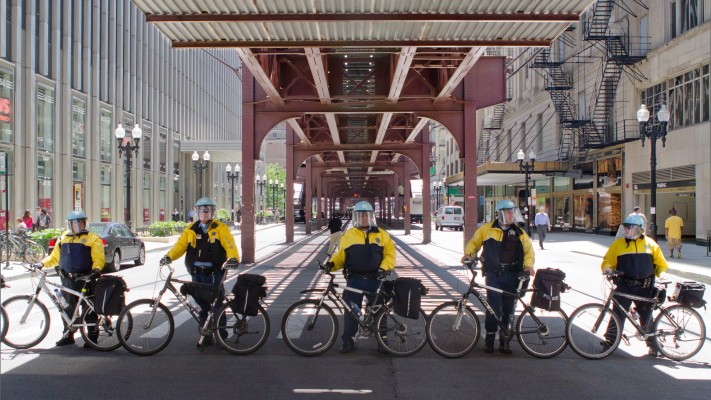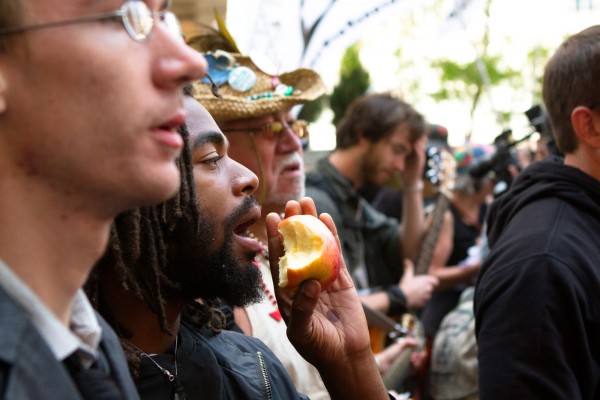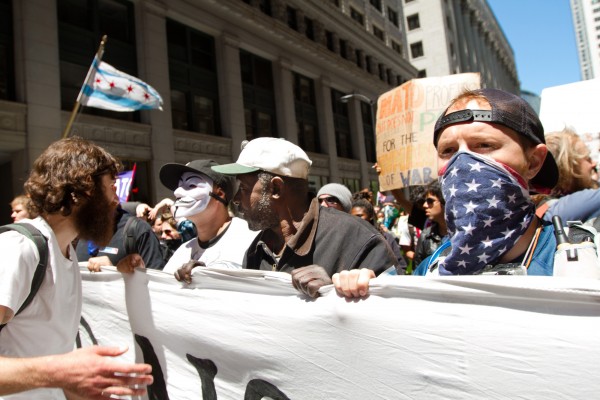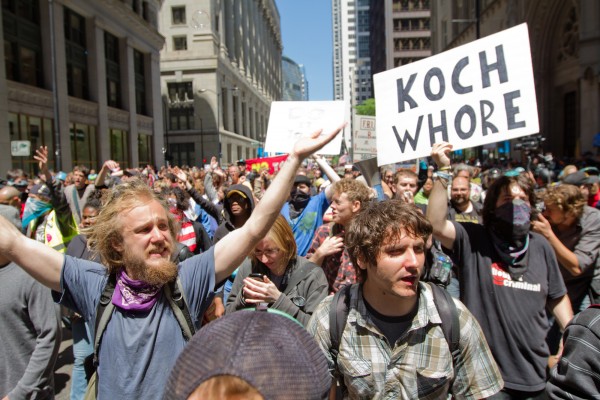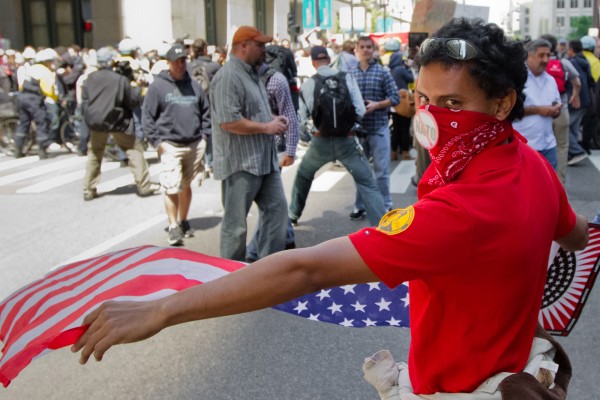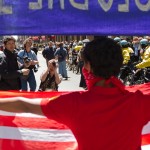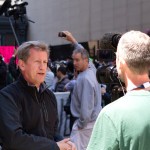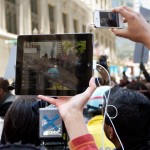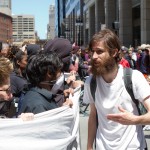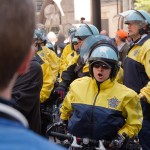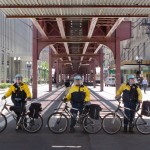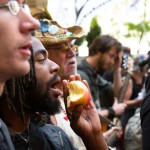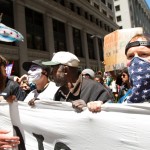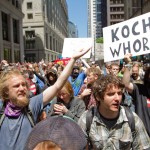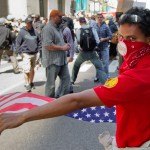The recent NATO Summit caused quite a stir here in Chicago. Highway traffic was disrupted, firms in the commercial district had employees work off-site or dress down to blend in, security restrictions were placed on suburban public transit, and law enforcement was on high-alert in the downtown area. Protests and traffic disruptions were the constant talk of local news outlets.
As a photographer living in Chicago, I couldn’t pass up the opportunity to take some shots of the protests. I took a break from my day-to-day work on Monday, May 21, to see what was going on with the protests and to take some photographs. I wasn’t shooting for any assignment and had no plans of distributing the photos. I was there for the experience. When I arrived on scene at Washington and Wacker, I quickly realized trying to market my photos would be pointless anyway – there were so many photographers and news crews, I’m almost positive at least two or three other people captured the same images I did. Also, nothing newsworthy happened. However, the dynamic between protesters, media, police, and curious onlookers was fascinating. I was particularly interested in the media’s relationship to the protests.
The whole spectrum of media was there – professional news crews with reporters, broadcasting cameras, and sound teams; professional photographers on assignment with press badges and long lenses; photographers like me, with professional equipment but no real assignment; amateurs with entry-level dSLRs; and curious onlookers with their iPhones and point-and-shoots. Several people filmed with their tablets and smartphones to post to social media. On this particular occasion, I’d estimate there were just as many media and police present as there were actual protesters.
It occurred to me that the protest wouldn’t have existed without the media. What’s the point of protesting if no one notices you? But just by virtue of the protest’s existence, the media had to show up in case something eventful happened (indeed, even if they knew nothing was going to happen, they would still have to report it out of obligation). I unwittingly became part of that dynamic.
I photographed the protests for about an hour until I needed to get back to work. Nothing of significance happened that day, but my favorite photos are above. If you’re interested in seeing some really good and much more extensive photo coverage of the protests, check out the Chicago Tribune’s Photo Desk, particularly May 20th’s album.
